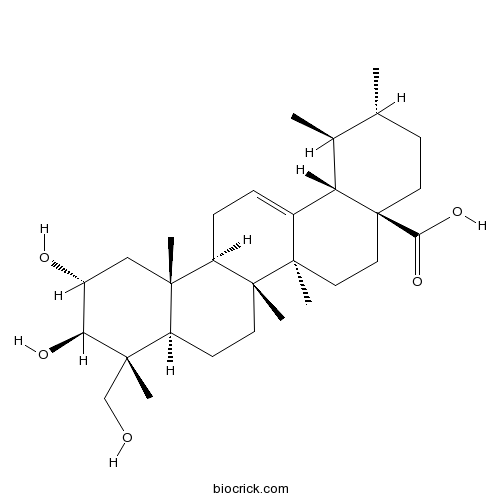Products for Triterpenoids
-
BCN8531
3-Epibetulinic acid
Epibetulinic acid, isolated from the root bark of Maytenus cuzcoina and the leaves of Maytenus chiapensis, exhibits potent inhibitory effects on NO and prostaglandin E2 (PGE2) production in mouse macrophages (RAW 264.7) stimulated with bacterial endotoxin with IC50s of 0.7 and 0.6 μM, respectively. Anti-inflammatory activity.(CAS NO.:38736-77-5)
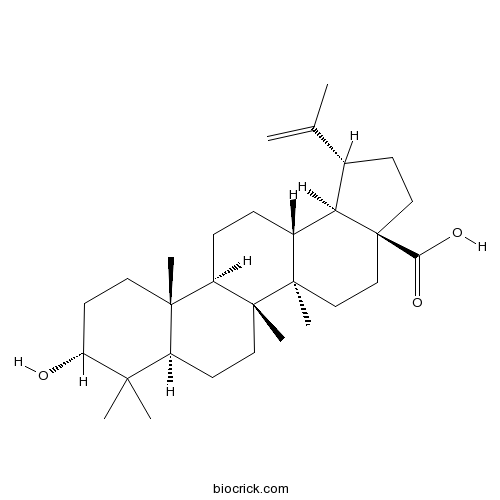
-
BCN2355
Cucurbitacin D
Cucurbitacin D is an active component in Cucurbita texana, disrupts interactions between Hsp90 and two co-chaperones, Cdc37 and p23. Cucurbitacin D prevents Hsp90 client (Her2, Raf, Cdk6, pAkt) maturation without induction of the heat shock response. Anti-cancer activity.(CAS NO.:3877-86-9)
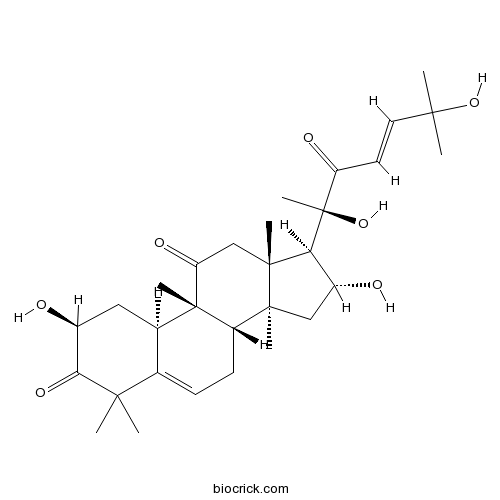
-
BCN7874
Tetrahydroisocucurbitacin I
Botanical source: The rhizomes of Hemsleya amabilis(CAS NO.:3877-89-2)
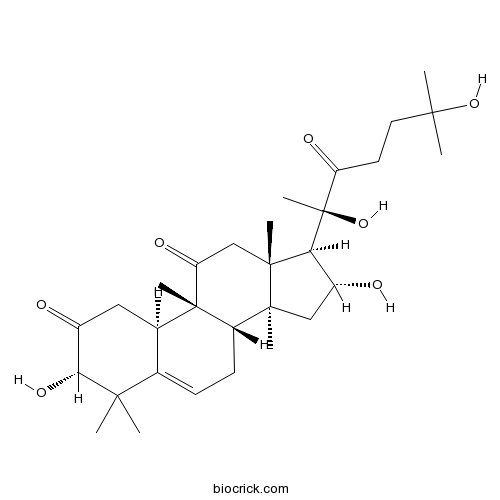
-
BCN2399
Nigranoic acid
Nigranoic acid is a triterpenoid separated from Schisandra chinensis. Nigranoic acid inhibits HIV-1 reverse transcriptase. Nigranoic acid exhibits protective effects on brain through PARP/AIF signaling pathway in cerebral ischemia-reperfusion animal model.(CAS NO.:39111-07-4)
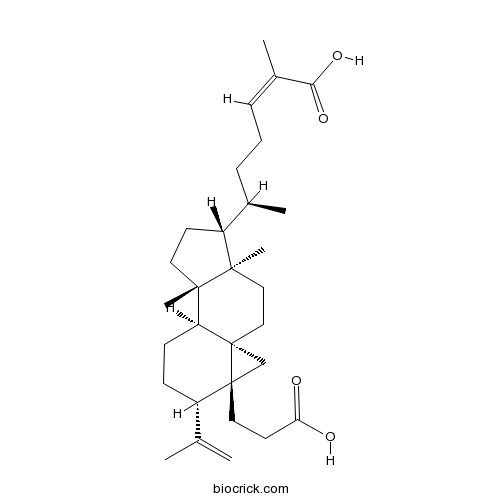
-
BCN1246
Ginsenoside Compound K
Ginsenoside C-K, a bacterial metabolite of G-Rb1, exhibits anti-inflammatory effects by reducing iNOS and COX-2. Ginsenoside C-K exhibits an inhibition against the activity of CYP2C9 and CYP2A6 in human liver microsomes with IC50s of 32.0±3.6 μM and 63.6±4.2 μM, respectively.(CAS NO.:39262-14-1)
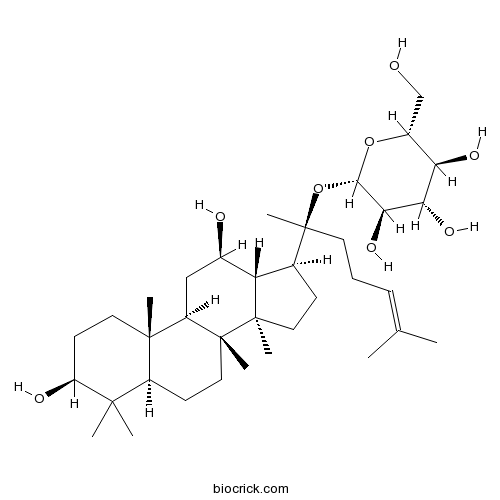
-
BCN1256
Asperosaponin VI
Asperosaponin VI, A saponin component from Dipsacus asper wall, induces osteoblast differentiation through BMP‐2/p38 and ERK1/2 pathway. Asperosaponin Ⅵ inhibits apoptosis in hypoxia-induced cardiomyocyte by increasing the Bcl-2/Bax ratio and decreasing active caspase-3 expression, as well as enhancing of p-Akt and p-CREB.(CAS NO.:39524-08-8)
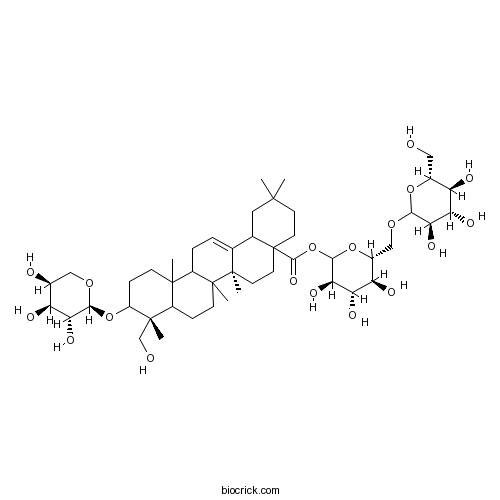
-
BCN2703
Bryonolol
Botanical source: The seeds of Trichosanthes kirilowii Maxim.(CAS NO.:39765-50-9)
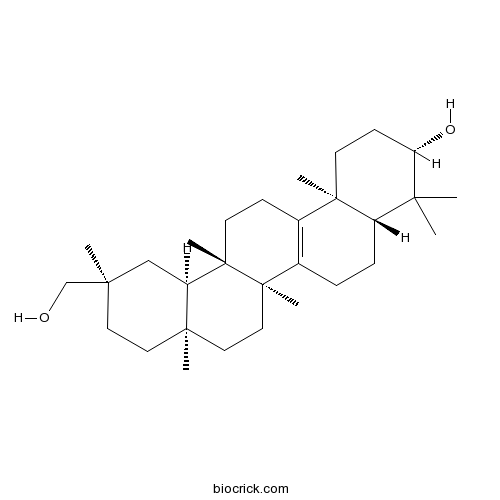
-
BCN5453
29-Hydroxyfriedelan-3-one
Botanical source: The herbs of Euonymus alatus (Thunb.) Sieb(CAS NO.:39903-21-4)
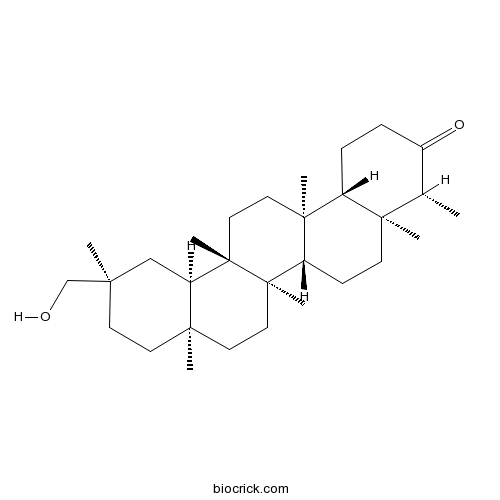
-
BCN8231
20-Hydroxyganoderic acid G
20-Hydroxyganoderic Acid G is a lanostane triterpenoid obtained from the EtOH extract of fruiting bodies of the Ganoderma curtisii. 20-Hydroxyganoderic Acid G inhibits BV-2 microglia cells activated by LPS with an IC50 of 21.33 μM. 20-Hydroxyganoderic Acid G has therapeutic potential in the drug discovery of nerve inflammation diseases associated with microglia activated by LPS.(CAS NO.:400604-12-8)
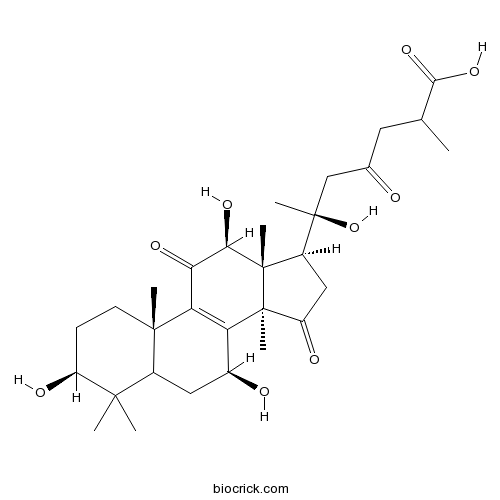
-
BCN1447
Acetylcimigenol 3-O-alpha-L-arabinopyranside
Acetylshengmanol Arabinoside is isolated from Cimicifugae rhizoma.(CAS NO.:402513-88-6)
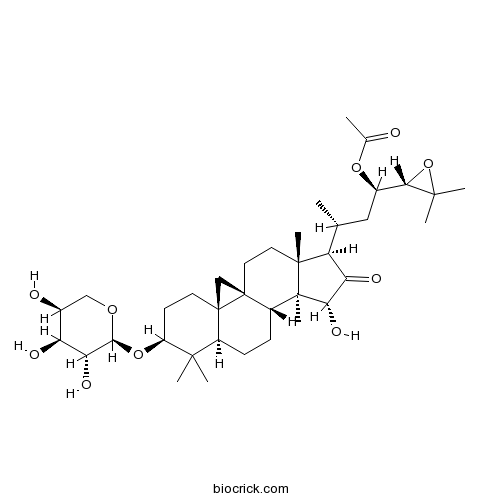
-
BCN6428
Pseudolarolide F
Botanical source: The peel of Pseudolarix amabilis(CAS NO.:412321-91-6)
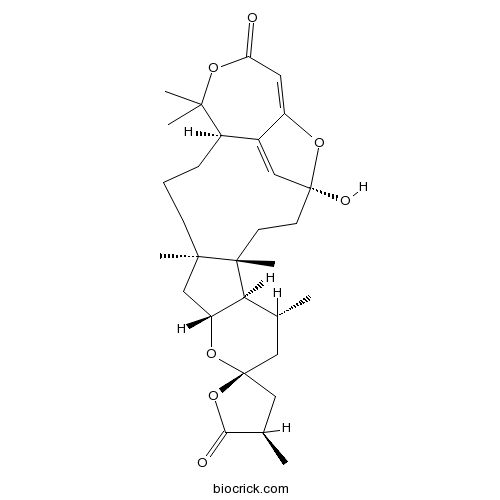
-
BCN3903
12-Oleanene-3,6-diol
Botanical source: The herbs of Celastrus orbiculatus Thunb.(CAS NO.:41498-79-7)
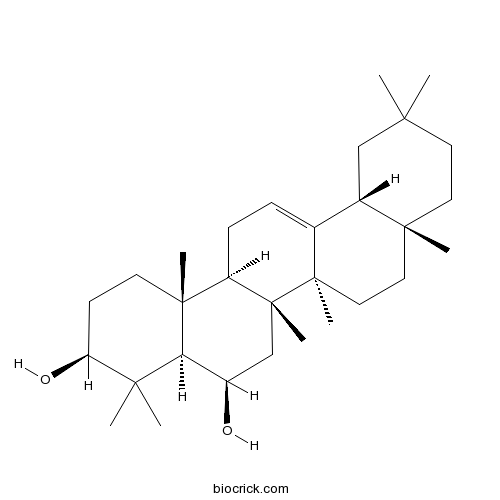
-
BCN3904
Daturaolone
Botanical source: The herbs of Datura stramonium Linn.(CAS NO.:41498-80-0)
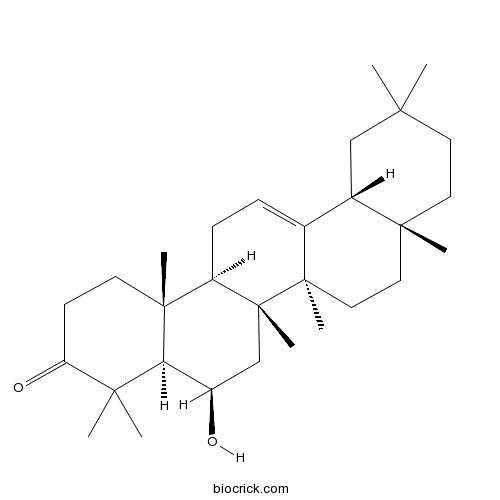
-
BCN8267
Poricoic acid G
Botanical source: The roots of Wolfiporia cocos (Schw.) Ryv.(CAS NO.:415724-84-4)
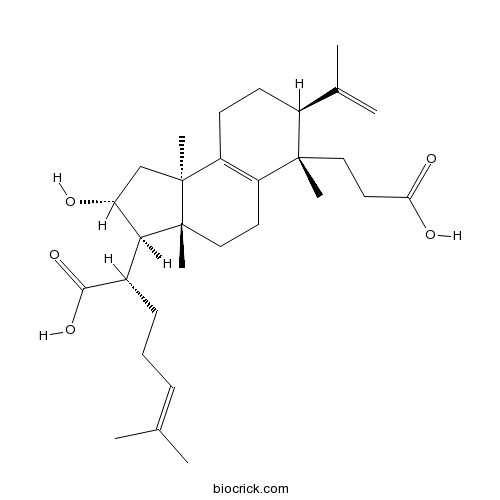
-
BCN1063
Ginsenoside Rb1
Ginsenoside Rb1 is part of a class of steroid glycosides; may have properties that inhibit or prevent the growth of tumors.(CAS NO.:41753-43-9)
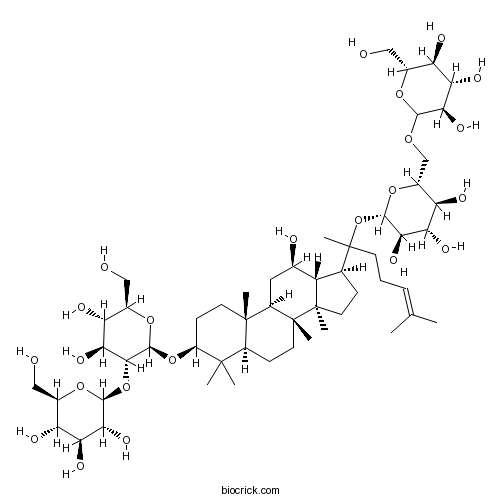
-
BCN4636
Mangiferolic acid
Botanical source: The herbs of Mangifera indica L.(CAS NO.:4184-34-3)
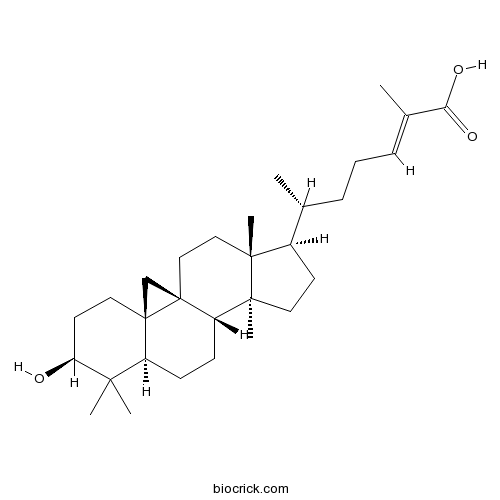
-
BCN2449
Lucialdehyde A
Botanical source: The fruit body of Ganoderma lucidum(CAS NO.:420781-84-6)
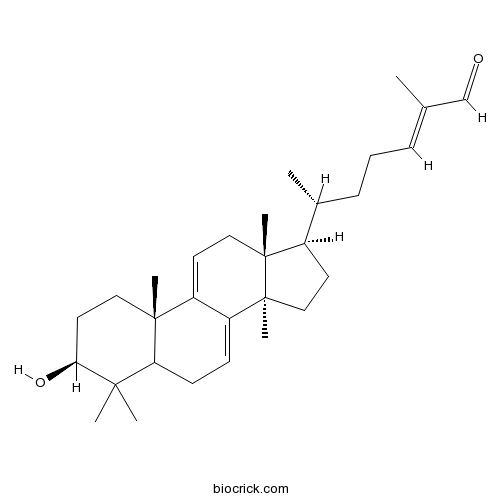
-
BCN7830
23-Hydroxylongispinogenin
23-Hydroxylongispinogenin (12-Oleanene-3β,16β,23,28-tetrol) is extracted from Lysimachia heterogenea Klatt. Lysimachia heterogenea Klatt is a perennial herb, which is used as a folk medicine in subduing swelling and detoxicating in China. The effective fraction LH-1 of L. heterogene has antitumor activity.(CAS NO.:42483-24-9)
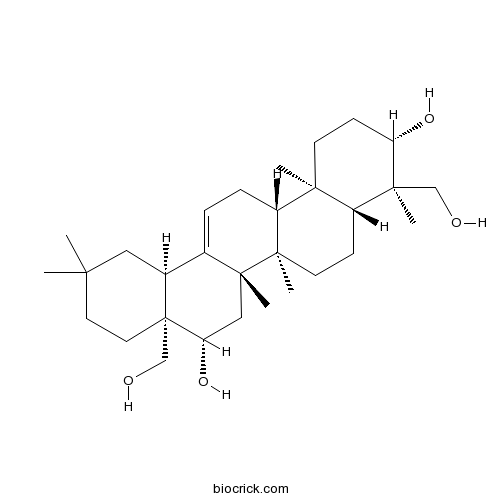
-
BCN7230
21,23-Dihydro-23-hydroxy-21-oxozapoterin
Botanical source: The aerial parts of Clausena excavata Burm. f.(CAS NO.:426266-88-8)
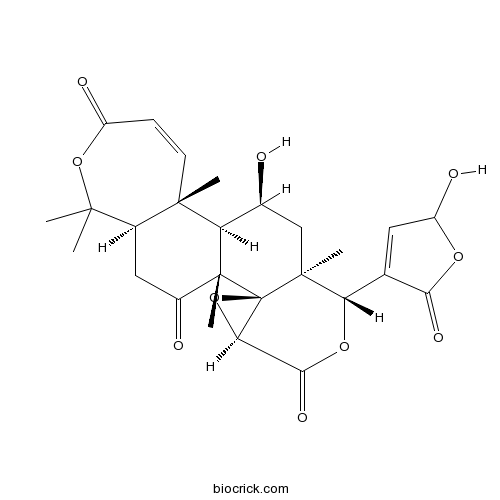
-
BCN1191
Pedunculoside
Pedunculoside is a main bioactive component isolated from Jiubiying. Pedunculoside exerts lipid-lowering effects partly through the regulation of lipogenesis and fatty acid β-oxidation.(CAS NO.:42719-32-4)
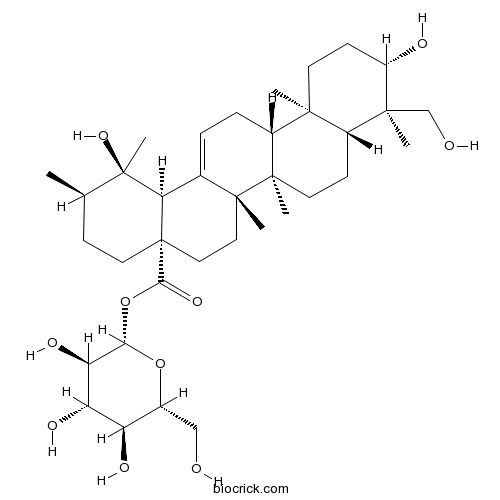
-
BCN5486
3-O-Acetyloleanolic acid
3-O-Acetyloleanolic acid (3AOA), an oleanolic acid derivative isolated from the seeds of Vigna sinensis K., induces in cancer and also exhibits anti-angiogenesis activity.(CAS NO.:4339-72-4)
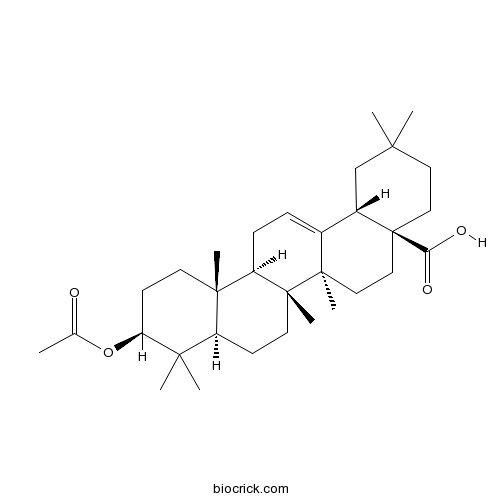
-
BCN5487
Crategolic acid
Maslinic acid can inhibit the DNA-binding activity of NF-κB p65 and abolish the phosphorylation of IκB-α, which is required for p65 activation.(CAS NO.:4373-41-5)
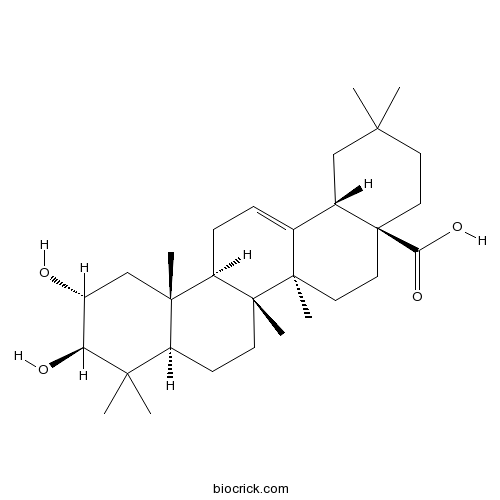
-
BCN5500
Betulonic acid
Betulonic acid belongs to the pentacyclic triterpenic derivative class, has antitumor activities.(CAS NO.:4481-62-3)
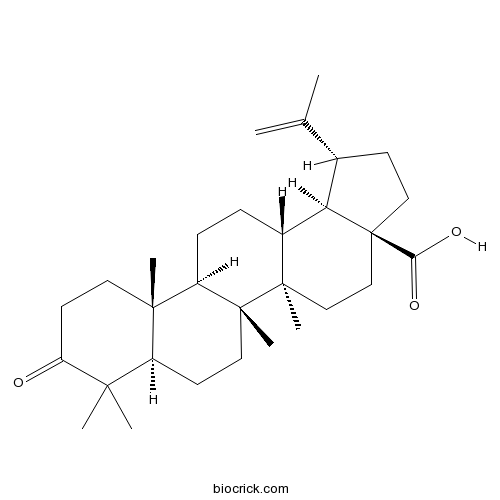
-
BCN5503
Corosolic acid
Corosolic acid isolated from the fruit of Cratoegus pinnatifida var. psilosa, was reported to have anticancer activity.(CAS NO.:4547-24-4)
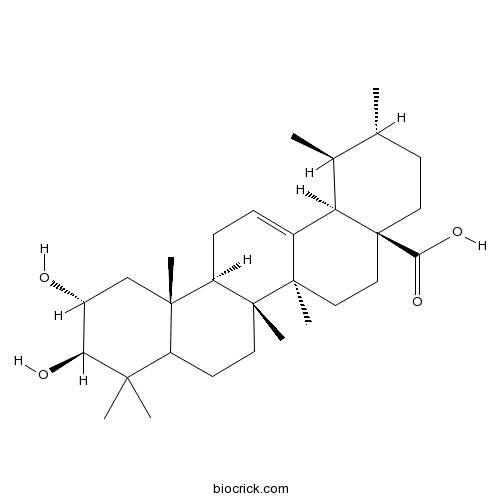
-
BCN5506
Asiatic acid
Asiatic acid, a pentacyclic triterpene found in Centella asiatica, induces apoptosis in melanoma cells. Asiatic acid has the potential for skin cancer treatment. Asiatic acid also has anti-inflammatory activities.(CAS NO.:464-92-6)
